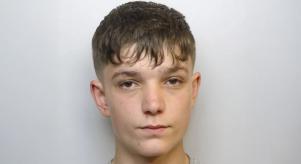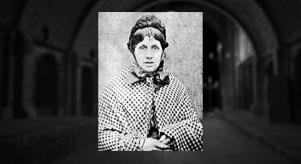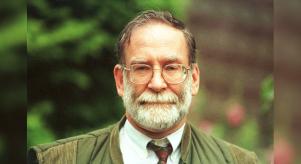
Who Killed The Black Dahlia?
She was found hacked in half, in a desolate corner of Los Angeles on 15 January 1947. Elizabeth Short, the Black Dahlia. The failed actress who found the fame in death which evaded her in life. That's if the stories are right, and she actually WAS a failed actress. Even today, the details of her life remain shadowy, controversial, twisted by rumours and tabloid exaggeration.
The “classic” version of Elizabeth Short’s story is that she was indeed trying to make it big in the movies when she crossed paths with her anonymous murderer. This story resonates because it makes her life into a neat cautionary tale about the dark side of the Hollywood dream factory, evoking an image of streets littered with broken dreams – and, in Short’s case, a broken body. Certainly, reporters at the time immediately pounced on her supposedly shady and squalid personal life, painting her as a lady of the night, a loose woman with countless lovers, a kind of shabbily alluring femme fatale who – it was almost suggested – got what was coming to her.
The truth is Elizabeth Short was an ordinary young woman who found herself adrift in life, after a uniquely unusual upbringing. Her father was thought to have killed himself when she was a child, only to later reveal he’d feigned his own death to start again in another part of the United States. Elizabeth moved out to California to be close to him, but the relationship broke down, and she left. So began an uncertain period of wandering, during which she was arrested for underaged drinking. Her defiant, dramatic mugshot would later become the most iconic image of this doomed beauty.
There were love affairs. She had a grand romance with a dashing air force pilot who was killed in a plane crash. And then, after settling in Los Angeles, she met her own death at the hands of a bizarre killer. His method was at once savage and meticulous. He cut her in half at the waist, leaving a gap between the two sections of her corpse. Her legs were spread, and her arms were placed in a strangely jaunty angle, as if she was relaxing on the grass. Most disturbingly, the killer had slashed the corners of her lips into a “Glasgow smile”.
Who did it? One of the biggest manhunts in the history of California law enforcements didn’t uncover the truth, despite turning up countless suspects from all backgrounds. Since then, the Black Dahlia case has come to rank alongside the enigma of the Zodiac Killer, and the true identity of Jack the Ripper, as one of the great unsolved riddles of crime.
One of the biggest manhunts in the history of California
One of the earliest leads was literally delivered to the police in the form of a package, purportedly sent by the killer, which contained Elizabeth Short’s birth certificate, photographs and an address book bearing the name Mark Hansen.
This Mark Hansen looked a likely suspect at first – a sleazy-seeming businessman who ran a nightclub and was known for taking in hard-up young women, employing them as dancers, while also associating with LA mobsters. It turned out that Elizabeth Short had lived with Hansen for a time, but he was cleared of any involvement in her murder. After all, it made no sense that a nightclub owner would kill a woman in such an elaborate, grotesque way, even if he had allegedly been rebuffed by her.
At the time, Dillon was fingered as a bona fide suspect at the time by LAPD psychiatrist Dr J. Paul De River. In what must rank as one of the strangest episodes in the history of homicide detection, the doctor got into a letter correspondence with Dillon, when the latter contacted him after seeing him referenced in a news article about the case. They began to openly discuss the ins and outs of the murder, sharing theories about what drove the psychopathic killer. All the while, the suspicious doctor analyzed Dillon’s responses for clues he was the killer himself.
It never came to anything. And there’s now a strong, competing theory that the killer wasn’t some obscure, shady character like Leslie Dillon, but a prominent doctor called George Hodel. Seemingly a pillar of the community, Hodel came on the police radar for the Short murder because he been previously investigated for allegedly molesting his own young daughter.
Although he’d been acquitted of incest, the murkiness of the case made Hodel a prime suspect in the Dahlia case, and he was even put under surveillance for months. Hodel was recorded saying some fantastically, jaw-droppingly suspicious things. Police heard him casually speak about murdering a woman with a pillow over her head, and even utter the following words: “Supposin’ I did kill the Black Dahlia. They couldn’t prove it now.”
George Hodel’s own son, a retired detective, firmly believes his father was Elizabeth Short’s killer. There are even theories that Dr Hodel’s interest in the arts, and friendship with legendary photographer Man Ray, accounted for his weird, artful positioning of his victim’s corpse. And who better than a trained doctor to cleanly slice a body in two?
The fact is, despite the powerful arguments made by various journalists and insiders, we’ll likely never know who really murdered Elizabeth Short, and why. This defining mystery from the dark side of LA will continue.




